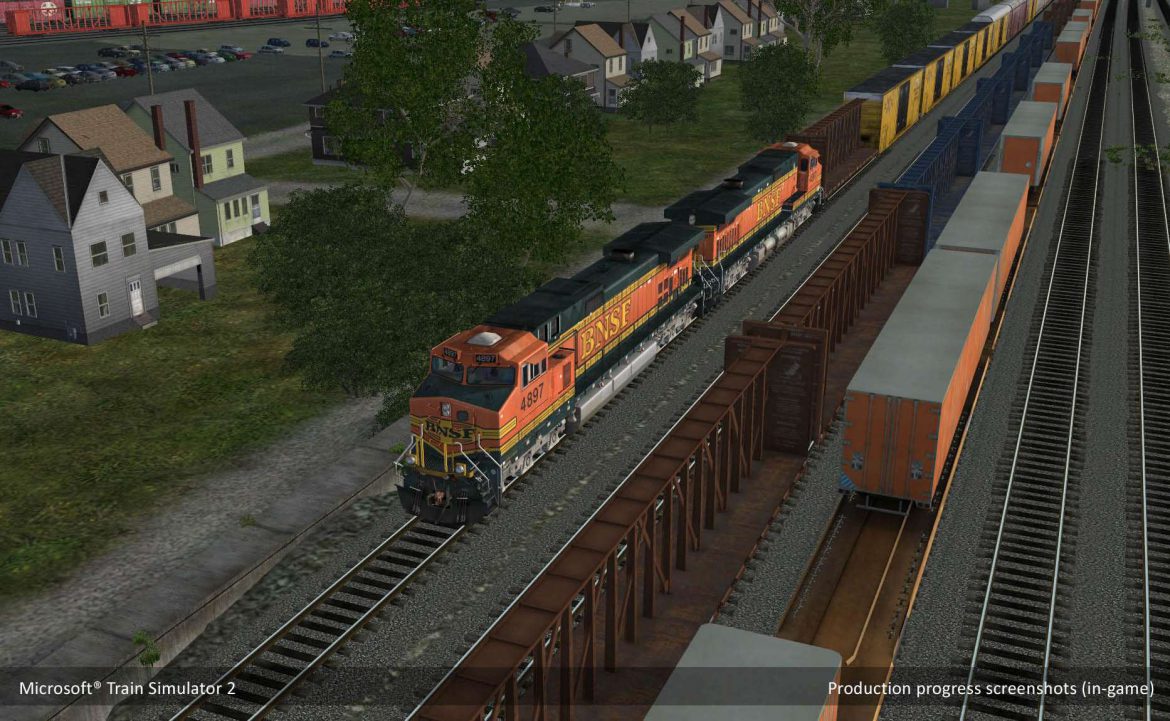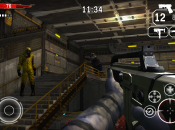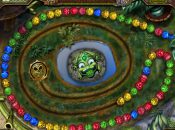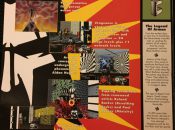
Microsoft Train Simulator
Cheat Codes:
------------
Submitted by: rickHH
Go 200+ mph:
------------
Select "Simple Controls" in the options window, select the Innsbruck to
St. Anton route, select the starting point to be St. Anton, and select
the Flying Scotsman as the train. Start the simulation. Detach from your
train (leave the tender) and press D until the regulator is at 100%. Wait,
and your speed will exceed 200 mph.
Command Line Switches:
----------------------
The game features a variety of undocumented command line parameters.
Undocumented until they started to get emailed out to people contacting
MS support regarding the sometimes lousy performance of the game The
majority act as switches for various capabilities of the game's graphic
engine, which can increase performance. Use at your own risk.
Used to increase capabilities:
/anisotropic - enables anisotropic mode
/fsaa - enables full scene anti-aliasing
Used to troubleshoot:
/forcemaskz - fixes "block form" smoke effects
/pixbias - fixes blocky, unsmoothed text
/nofiltercab - fixes seams being visible in cab
/ttfblitfix - fixes distorted/missing text
/skipsizecheck - Skips texture size limit check
/skipbiascheck - Skips pixel behavior check
/simpleclipping - changes clipping mode, (fixes "snow" effects on videocards)
/maxtex:# - fixes texture distortion where # is the memory value it's
to be forced into (for instance /maxtex:256).
Hints:
------
At it's simplest level Train Simulator can be used as an interactive screen-
saver, one of the first options is the ability to take a virtual tour on any
of the lines with the AI driving the train. Tutorials are included for the
novice user to assist in learning how to operate steam, diesel and electric
locos. However the bread and butter of Train Simulator comes in actually
driving (or operating) trains as the virtual engineer. On selecting a route
you are given an option to explore in "free play" mode, though this is still
subject to speed restrictions etc. In practice this is not always easy as
every time you approach a set of facing points you need to choose which leg
of the turnout you take. This can lead you up a dead end spur or siding.
Also, in explore the route, there are no AI trains as the dispatcher is
inactive.
Each route comes with a number of pre-defined activities or work orders.
Depending on the route, these might be passenger or freight operations and
in addition to driving the train you may also be required to switch cars in
or out at locations along the way, pick up or drop off helper engines etc.
This is so much more than in previous simulations and adds to the sense that
Train Simulator is a complete virtual railroading experience. All the routes
(apart from the Kalispell branch on Marias Pass) are fully signalled
according to the rules and era of the particular railway and under control
of the aforementioned AI dispatcher. It's quite something to arrive on a
crossing loop with a train waiting on the opposite track. As you draw in
clear the signal for the other train changes to proceed and it departs!
On the Settle & Carlisle the semaphore signals change with a satisfying
"clank".
Whether driving steam, diesel or electric traction each type presents its
own challenge. Steam locos are the most demanding, particularly if you
switch off the AI fireman and attend to the boiler and fire yourself.
The workload this creates is very tough, leaving little time for sight
seeing but ultimately more rewarding than just letting the computer take
care of things. Don't forget to switch the blower on before entering
tunnels or stopping though, or you will end up well done to crispy when
the fire blows back! My only comment about the steam locos is that
acceleration seems a little brisk at times, at least compared to what
I have experienced travelling behind steam. Diesel is quite a bit easier
to handle, but on Marias Pass this is countered by the fact you have to
manage a 50 or 60 car consist behind the locos - possibly one mile long
and 5000 tonnes in weight. It is easy (actually too easy) to break a
coupler if you mis-manage the train handling. Everything you do from
advancing the throttle to making a brake application has to be planned
ahead and executed with regard to how it might affect the portion of
the train 1000 yards back. Your performance is rated on how well you
manage passenger comfort and freight durability. Both the US locos are
fitted with dynamic braking but as implemented in the simulation are not
very effective. It should be possible to slow and nearly stop a train on
dynamics but at 40 MPH on level track, full dynamic braking barely retards
the train. Simplest of all are the electrics, particularly the Acela which
is the Ferrari of the Train Simulator collection. Very easy to get carried
away with this baby!
A number of visual aids are provided to assist in operating the train.
The most useful of these is the Track Monitor which shows upcoming speed
restrictions and signal aspects or if you are being switched at a turnout.
You also get a projection of your "expected" speed according to the route
ahead if you continue at current throttle or brake settings. In practice
this tends to fluctuate especially on undulating routes and an indication
of the actual gradients would have been more useful. On a number of the
routes (notably Marias Pass, at East Java) you can experience quite
abrupt changes in gradient with little or no transition. A few of the
gradients seem steeper than they otherwise should be, almost as if the
developers have stuck rigidly to the DEM data rather than referring to
a gradient profile. This is also probably the best place to mention that
curved track is not canted (super-elevated on the outside curve) though
one assumes this is factored in to the physics. Other pop-ups tell you
how far to the next station stop, allow you to manually switch points
in yard limits for switching or call up the train consist. Very useful
for steam locos or controlling the train in external view is a HUD view
which can be called up on the right side of the screen.
A couple of limitations - you can't change cabs, the forward view is
always from the primary traction unit. So when reversing the train you
need to do so in external view. This effectively makes it impractical
to include lines where trains reverse en route, as you can't change ends
(in an MU train), run the loco round the train and change cabs, or attach
a fresh engine at the other end facing the correct way.
Pass through red light:
-----------------------
In an activity where ignoring red light will end it, press [Tab] and you can
pass through the red light.
Traffic Signs:
--------------
When you see the RED signal, make sure you stop in front of it (not at it).
Breaking the other signs is fine (speed reduction, approach, honk horn because
of road crossing) but if you don't stop for a red, the activity is automatically
ended. Imagine playing a two hour activity only to have it end because you didn't
stop for the final signpost.







